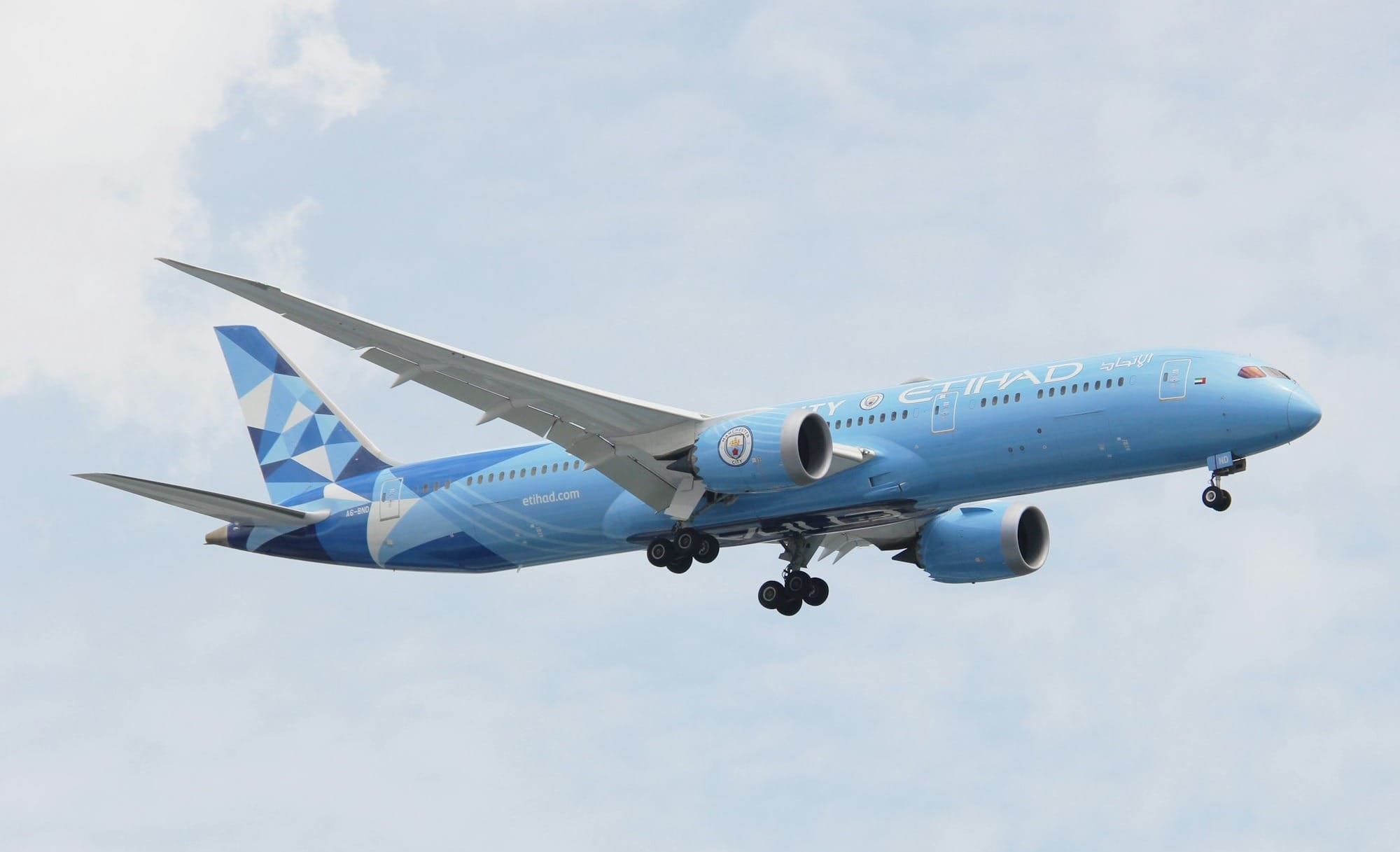Global Total Passenger Forecast for 2023 Reaches 8.5 Billion, 93.8% Recovery from Pre-Pandemic Levels
The global aviation industry is on a strong recovery trajectory, with the latest forecasts indicating that total passenger numbers for 2023 are expected to reach 8.5 billion.

Global Total Passenger Forecast for 2023 Reaches 8.5 Billion, 93.8% Recovery from Pre-Pandemic Levels
Key Takeaways:
- Global passenger numbers for 2023 are forecasted to reach 8.5 billion.
- This represents a 93.8% recovery from pre-pandemic levels.
- Recovery varies significantly across different regions.
- Key factors driving recovery include vaccination rollouts, pent-up demand, and easing of travel restrictions.
- Challenges remain, including operational constraints, rising costs, and sustainability concerns.
The Aviation Industry's Strong Recovery Trajectory
The global aviation industry is on a strong recovery trajectory, with the latest forecasts indicating that total passenger numbers for 2023 are expected to reach 8.5 billion. This figure represents a remarkable 93.8% recovery from pre-pandemic levels, signaling a robust rebound for the sector that was severely impacted by the COVID-19 crisis.
The International Air Transport Association (IATA), the leading trade association for the world's airlines, released this encouraging forecast, highlighting the resilience and adaptability of the aviation industry in the face of unprecedented challenges. This recovery is a testament to the pent-up demand for air travel and the gradual easing of travel restrictions worldwide.
Breaking Down the Numbers
The 8.5 billion passenger forecast for 2023 is a significant improvement from the previous year. In 2022, global passenger numbers stood at approximately 7.1 billion, representing about 78% of pre-pandemic levels. The projected increase to 93.8% of 2019 levels in 2023 demonstrates the accelerating pace of recovery.
It's important to note that this recovery is not uniform across all regions and markets. Domestic travel has generally recovered faster than international travel, with some markets even surpassing pre-pandemic levels. For instance, the U.S. domestic market has shown particularly strong performance, with passenger numbers in some months of 2023 exceeding those of the same period in 2019.
Regional Variations in Recovery
The recovery pattern varies significantly across different regions:
Asia-Pacific
This region has seen a slower recovery compared to others, primarily due to China's prolonged COVID-19 restrictions. However, with China's reopening in early 2023, the region has experienced a surge in travel demand. The IATA forecasts that by the end of 2023, Asia-Pacific will reach about 86% of its 2019 passenger levels.
North America
Led by strong domestic markets in the U.S. and Canada, North America has been at the forefront of the recovery. The region is expected to reach 97% of 2019 levels by the end of 2023.
Europe
Despite initial setbacks due to varying travel restrictions across countries, Europe has seen a strong rebound, particularly in intra-European travel. The region is projected to reach 95% of 2019 levels by year-end.
Middle East
Benefiting from its strategic location for international connections, the Middle East has shown resilience. It's forecasted to reach 90% of pre-pandemic levels in 2023.
Latin America
This region has demonstrated a robust recovery, with some markets already surpassing 2019 levels. Overall, Latin America is expected to reach 96% of pre-pandemic passenger numbers by the end of 2023.
Africa
While facing challenges, Africa has shown steady improvement and is projected to reach 85% of 2019 levels by year-end.
Factors Driving the Recovery
Several key factors have contributed to this impressive recovery:
- Vaccination Rollouts: The global vaccination effort has played a crucial role in restoring traveler confidence and enabling the easing of travel restrictions.
- Pent-up Demand: After years of limited travel opportunities, there's a significant pent-up demand for both leisure and business travel.
- Easing of Travel Restrictions: Many countries have relaxed or removed COVID-19 related travel restrictions, facilitating easier international travel.
- Airline Adaptability: Airlines have shown remarkable flexibility in adjusting their networks and operations to meet changing demand patterns.
- Economic Recovery: The general economic recovery in many parts of the world has supported increased travel spending.
Challenges Amidst Recovery
Despite the positive outlook, the aviation industry still faces several challenges:
- Operational Constraints: Many airports and airlines are grappling with staffing shortages, leading to operational disruptions.
- Rising Costs: Increased fuel prices and inflationary pressures are putting strain on airline finances.
- Sustainability Concerns: The industry faces growing pressure to address its environmental impact, necessitating investments in sustainable aviation fuels and more efficient aircraft.
- Geopolitical Tensions: Ongoing conflicts and tensions in various parts of the world continue to impact certain air travel routes and markets.
Looking Ahead: Prospects for 2024 and Beyond
As the industry approaches full recovery, attention is turning to future growth prospects. IATA projects that global passenger numbers could surpass pre-pandemic levels in 2024, potentially reaching 9.4 billion passengers. This would represent a 4% increase over the 2019 figure of 9.0 billion passengers.
Willie Walsh, IATA's Director General, commented on the outlook: "The recovery in air travel is nothing short of remarkable. We are on track to surpass pre-pandemic levels in 2024, which is a testament to the resilience of our industry and the enduring desire of people to travel."
However, this growth is not without its challenges. The aviation industry must navigate several key issues to ensure sustainable long-term growth:
- Capacity Management: As demand returns to and exceeds pre-pandemic levels, airlines and airports must carefully manage capacity to avoid the operational issues seen during the initial recovery phase.
- Workforce Development: Addressing the industry-wide staffing shortages through recruitment and training initiatives will be crucial.
- Technological Innovation: Continued investment in technologies like biometrics, artificial intelligence, and sustainable aviation technologies will be essential for improving efficiency and reducing environmental impact.
- Sustainability Initiatives: The industry's commitment to achieving net-zero carbon emissions by 2050 will require significant investments and collaboration across the sector.
- Regulatory Environment: Navigating the evolving regulatory landscape, particularly concerning health and safety measures, will remain a priority.
Conclusion
The projected recovery of global passenger numbers to 93.8% of pre-pandemic levels in 2023, reaching 8.5 billion passengers, is a clear indication of the aviation industry's resilience and the strong underlying demand for air travel. This recovery, while impressive, has not been without its challenges, and the industry continues to navigate a complex landscape of operational, financial, and environmental issues.
As we look towards 2024 and beyond, the aviation sector stands at a crucial juncture. The potential to surpass pre-pandemic passenger levels presents both opportunities and responsibilities. Airlines, airports, and related businesses must not only manage the return to growth but also address the long-term sustainability of the industry.
The coming years will likely see accelerated adoption of new technologies, increased focus on environmental initiatives, and continued efforts to enhance the passenger experience. The industry's ability to balance these priorities while meeting growing demand will be key to its long-term success and sustainability.
As air travel continues to play a vital role in global connectivity, economic growth, and cultural exchange, the robust recovery seen in 2023 sets a positive tone for the future of aviation. However, stakeholders across the industry must remain vigilant and adaptable, ready to face new challenges and seize emerging opportunities in an ever-evolving global landscape.
Q&A Section
Q: What is the projected global passenger number for 2023? A: The projected global passenger number for 2023 is 8.5 billion.
Q: How does the 2023 forecast compare to pre-pandemic levels? A: The 2023 forecast represents a 93.8% recovery from pre-pandemic levels.
Q: Which region is expected to recover the fastest? A: North America is expected to recover the fastest, reaching 97% of 2019 levels by the end of 2023.
Q: What are some key factors driving the recovery in the aviation industry? A: Key factors include vaccination rollouts, pent-up demand, easing of travel restrictions, airline adaptability, and economic recovery.
Q: What challenges does the aviation industry still face? A: Challenges include operational constraints, rising costs, sustainability concerns, and geopolitical tensions.
Q: What are the prospects for global passenger numbers in 2024? A: IATA projects that global passenger numbers could surpass pre-pandemic levels in 2024, potentially reaching 9.4 billion passengers.








